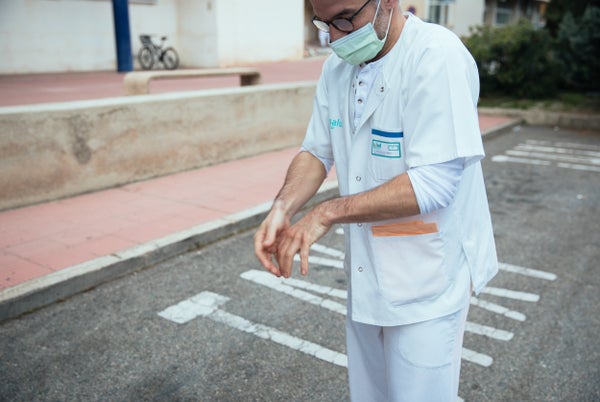This article was published in Scientific American’s former blog network and reflects the views of the author, not necessarily those of Scientific American
Is there a link between climate change and COCID-19, and should we be worried about other infectious diseases?
We know climate change is having widespread impacts on our health, including by worsening illnesses ranging from seasonal allergies to heart and lung disease. But what do we know about how climate change affects infectious diseases? Here are some answers.
Do weather and climate influence the risk of COVID-19?
On supporting science journalism
If you're enjoying this article, consider supporting our award-winning journalism by subscribing. By purchasing a subscription you are helping to ensure the future of impactful stories about the discoveries and ideas shaping our world today.
No. At the moment there is no scientific evidence to believe that either weather or climate have a particularly strong influence on the transmission of the COVID-19 disease, since the new disease currently also spreads in hot and humid climates. There is also no evidence that climate change made the emergence or transmission of COVID-19 more likely. Popular myths around COVID-19, such as that the novel coronavirus will be killed by hot or cold weather have also all been debunked.
COVID-19 is mainly transmitted directly from person to person through close contact, or through respiratory droplets produced when an infected person coughs, sneezes or exhales. People can catch the disease if they breathe in those droplets, or by touching objects or surfaces where infected droplets have landed, then touching their eyes, nose or mouth.
While temperature and humidity may influence how long the virus survives outside of the human body, this effect is likely to be many degrees smaller compared to the degree of contact between people. Washing hands and reducing physical contact are therefore essential to breaking the chain of transmission, in all locations, seasons and climates.
Will climate change make the effects of COVID-19 worse?
Even though climate change did not cause the emergence of COVID-19, it could indirectly make the effects of a current or future pandemic worse. This is because it undermines the environmental conditions we need for good health—access to water, clean air, food and shelter—and places additional stress on health systems.
For example, climate change is causing widespread drought and desertification in much of the world, threatening the availability of water for consumption, food production, personal hygiene, and medical care, including for infectious disease. In drought-prone areas, medical facilities with water shortages will be ill-equipped to deal with the outbreak. Similarly, COVID-19 outbreaks will cripple already weakened health systems in regions that have seen an increase in the frequency and severity of climate-induced extreme weather events, such as Haiti or Mozambique.
For health systems already weakened by climate-related health impacts, flattening the curve of infections to avoid overwhelming the healthcare system becomes much more challenging.
What about other infectious diseases?
We do know that infections that are transmitted through water, through food, or by vectors such as mosquitoes and ticks, are highly sensitive to weather and climate conditions. The warmer, wetter and more variable conditions brought by climate change are therefore making it easier to transmit diseases such as malaria, dengue fever, chikungunya, yellow fever, Zika virus, West Nile virus and Lyme disease in many parts of the world.
The Lancet Countdown, a scientific collaboration between 35 institutions, found that the climate suitability for disease transmission has already increased for diseases including dengue, malaria and cholera.
As an example, a changing climate is aggravating the negative health impacts of malaria by broadening the range of the Anopheles mosquito, the vector that spreads it. It also lengthens the season in which mosquitos reproduce and transmit the disease, thereby increasing the number of people at risk. A similar escalation takes place for diseases such as dengue fever, chikungunya, yellow fever and Zika, which are spread by Aedes mosquitos.
Lyme disease, which is spread by ticks, is also increasing its range and seasonality in many parts of North America and Europe, while waterborne cholera and cryptosporidiosis are increasing with more frequent droughts and flooding.
What can the global response to COVID-19 teach us about our response to climate change?
Both climate change and COVID-19 are public health threats, although they are playing out across vastly different timescales. Both require early action to save lives, as well as adequate health systems that provide equitable access to the most vulnerable in society.
Just as with COVID-19, how well communities can cope with infectious diseases and other health impacts that are intensified by climate change ultimately depends on the underlying strength and resilience of the health system, whether it ensures protection for the most vulnerable in society, and the extent to which it protects the public from both short and long-term health threats.
